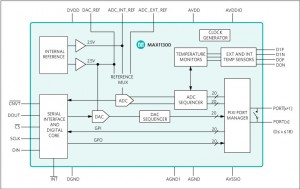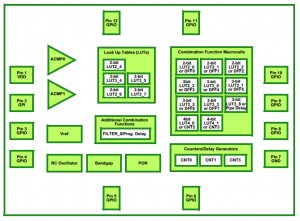Engineers can mix and match 20 ADCs, 20 DACs or 20 High voltage digital I/O pins in any order using the MAX11300, mixed-signal PIXI technology.
PIXI claims to be the industry’s first configurable 20-channel, -10V to +10V high-voltage mixed-signal data converter.
It is for complex applications requiring multiple mixed-signal operations like base stations and industrial control and automation.
Graphical user interface software that comes with PIXI allows rapid drag and drop configuration of the device. Any function can be assigned to any pin.
Select an ADC and connect it to any of 20 pins, select a DAC and connect it to any pin or assign a digital I/O to any pin.
Unlike traditional multichannel data converters, PIXI lets engineers configure the 20 mixed signal input/outputs (I/Os) to optimise a design.
PIXI integrates a 12-bit, multichannel, analog-to-digital converter (ADC); a 12-bit, multichannel, buffered digital-to-analog converter (DAC); and high-voltage analog switches and digital I/Os.
With -10V to +10V, high-voltage range, PIXI enables high-voltage bipolar signals. It provides more design flexibility than any competing data converter.
Each of the 20 mixed-signal I/Os can be configured for the application, so designers can optimise PCB layout. Configuration software enables “drag and drop” setup of the 20 ports. Files can be exported for coding and easily reconfigured as requirements change.


